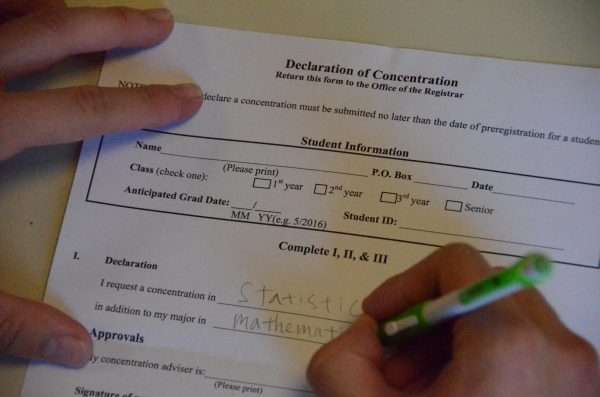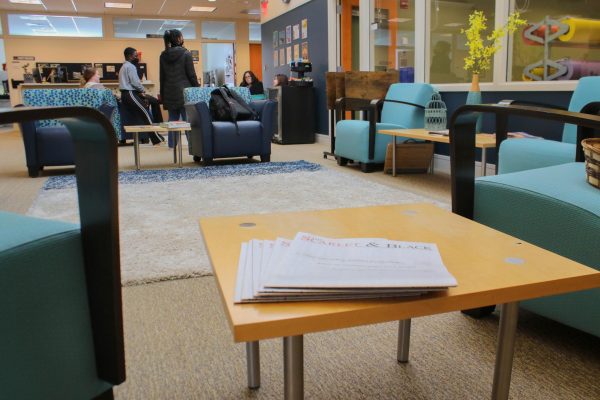Grinnell College braces for impact of predicted end of affirmative action
February 27, 2023
Grinnell College prepares for Supreme Court’s affirmative action decision
Grinnell College is weighing potential changes in admissions practices in anticipation of the likely end of affirmative action. In October 2022, the U.S. Supreme Court heard two cases (Students for Fair Admissions v. Presidents and Fellows of Harvard and Students for Fair Admissions v. University of North Carolina) that threaten the use of race-conscious admissions practices.
Students for Fair Admissions (SSFA) argued in separate cases against Harvard University and the University of North Carolina that race should not be a factor in admissions for private or public institutions of higher education. SSFA claims that the consideration of race creates a de facto quota system that violates Title VI of the Civil Rights Act of 1964, which prohibits discrimination on the basis of race, color or national origin in any program that receives federal funds.
Although the court’s official decision and legal reasoning are unlikely to be released until June, Grinnell faculty and staff are progressing under the presumption that race-conscious admissions practices will be struck down. The College is planning its response, which includes the development of alternative admissions strategies that sustain campus diversity.
The constitutionality of affirmative action
In 1978, the Supreme Court’s decision in Regents of the University of California v. Bakke effectively established that colleges could consider race in admissions if done so in a holistic manner. Race cannot be a determinative factor, but it can be weighed among other variables. The Supreme Court has upheld this precedent in numerous cases since Bakke.
“The only constitutionally permissible reason that the court said a college or university could take an applicant’s race into account was to create a diverse class for the educational benefit of the students,” said Peter Hanson, professor of political science and director of the Grinnell College National Poll. “The court rejected other justifications for race-conscious admissions, including the idea that affirmative action was a way to remedy societal racism,” he said.
In Bakke, the court held Harvard as the model for constitutional race-conscious admissions practices. Now, Harvard is accused of unconstitutionally capping the number of Asian American students it accepts. Hanson said that there is no evidence that a cap exists, but that the broader issue is whether Harvard can consider race at all.
“I think that the court will latch onto the idea that even thinking about race in the admissions process is improper,” said Hanson. “My guess is that they’ll say that an applicant’s racial identity can’t come into an admissions decision.”
According to Hanson, the court will likely argue that if Harvard, the model for implementing race-conscious admissions, is unable to do so correctly, then no institution should be doing it.
Grinnell’s current admissions model
Since the establishment of affirmative action, the Grinnell College Admissions Office has relied heavily on race-conscious practices, according to Joe Bagnoli, dean of admissions and financial aid and vice president of enrollment.
Bagnoli says that the consideration of race currently “sits alongside the factors of academic excellence, activities, recommendations and interviews.”
There are currently far more qualified applicants than available openings for incoming students. Consequently, Grinnell College President Anne Harris said that race-conscious practices are used to promote the college’s core value of diversity. “With 13,000 applications this year, a number that continues to increase, admissions can be like landing a 747 airplane on a postage stamp.”
With 13,000 applications this year, a number that continues to increase, admissions can be like landing a 747 airplane on a postage stamp.
— Anne Harris, President
Bagnoli said he believes that the benefits of affirmative action impact all students, not simply those that identify as underrepresented minorities. “Understanding that the world is experienced differently for different populations is an important part of becoming an educated person,” he said.
A future without affirmative action
Roughly 40% of U.S. colleges and universities currently use race-conscious admissions, so the end of affirmative action would require a vast admissions overhaul at many highly selective institutions, including Grinnell. Historically, maintaining diversity has proven elusive after transitioning to race-neutral alternatives. When California passed Proposition 209 in 1996, eliminating the use of race-conscious admissions at public institutions, enrollment of domestic students of color dropped sharply.
According to Bagnoli, “California’s public universities have spent nearly a half billion dollars on attempting to recover racial diversity and, still to this day, have never entirely recovered their enrollment of domestic Black students.”
Grinnell may face similar challenges. “Right now, enrollments are hovering around 10% Latinx students and 5% domestic Black students,” Harris said. “These are precarious numbers in terms of our mission of cultivating a diverse community.”
However, Bagnoli believes that Grinnell will sustain its diversity: “Frankly, our commitment to diversity will not wane at all in the wake of the Supreme Court decision,” said Bagnoli. “How we express that commitment and diversity will need to be different, but it will not be reduced.”
Progressing with alternative admissions practices
The Admissions Standards and Financial Aid Committee (ASFAC) and an executive leadership team have spearheaded the process of weighing potential race-neutral admissions alternatives. ASFAC consists of faculty, staff and students, and the executive leadership team includes representatives from the President’s Office, Academic Affairs, Legal Counsel and the Office of Diversity, Equity and Inclusion.
“In the absence of race, we need to try to find correlations between race and other variables,” said Bagnoli. “That may leave us to use variables like household income, first-generation status and neighborhood and high school data.”
David Hudson `23.5, a senior interviewer and prior multicultural recruitment intern for the Office of Admissions, said that the College should increase partnerships with community-based organizations and high schools and prioritize alumni engagement in the recruitment process. Hudson is also a QuestBridge scholar, a program that awards grants to low-income students to receive debt-free entrance to college.
“As a QuestBridge Scholar, I can attest to the value of organizations that help underrepresented and low-income students find schools where they’ll contribute meaningfully to the community,” Hudson said. “I was fortunate enough to know someone at Grinnell who encouraged me to apply. That type of connection with alumni is important for prospective students.”
Hudson said that financial aid may be another viable solution, pointing to the Black Student Union’s unmet request for a scholarship specific to Black students. “Say there was a scholarship dedicated to Black or Latinx students — I think significantly more underrepresented students would apply,” he said.
However, according to Harris, race-neutral alternatives must be implemented with caution. “Some race alternatives, like neighborhood data or socioeconomic status, have the potential to simply bring in a larger number of under-resourced white students,” she said. “Lower socioeconomic status white students would, by sheer numbers, not by quality, overwhelm the number of domestic Black and Latinx applicants.”
Therefore, Harris said she believes that the best long-term recruitment strategy is to improve the experience of current underrepresented students at Grinnell. “Grinnell is still a predominantly white institution. The most consequential response will be to use the removal of race from the admission process as a galvanizing event to support the most positive experience possible for students of color,” she said.
Hudson said the improvement of student experience is vital because “if you have a good experience at Grinnell, you’ll be more likely to recommend it to prospective students.”
The Class of 2026 was the first majority-minority incoming class in the College’s history. Harris says that the college will continue assessing options that prevent the Supreme Court’s likely decision from stifling this progress.
“This ruling is a dismantling of an enormous framework of higher education,” Harris said. “There is no quick fix, but we will use quantitative analysis and qualitative experience to continue prioritizing diversity.”








































































